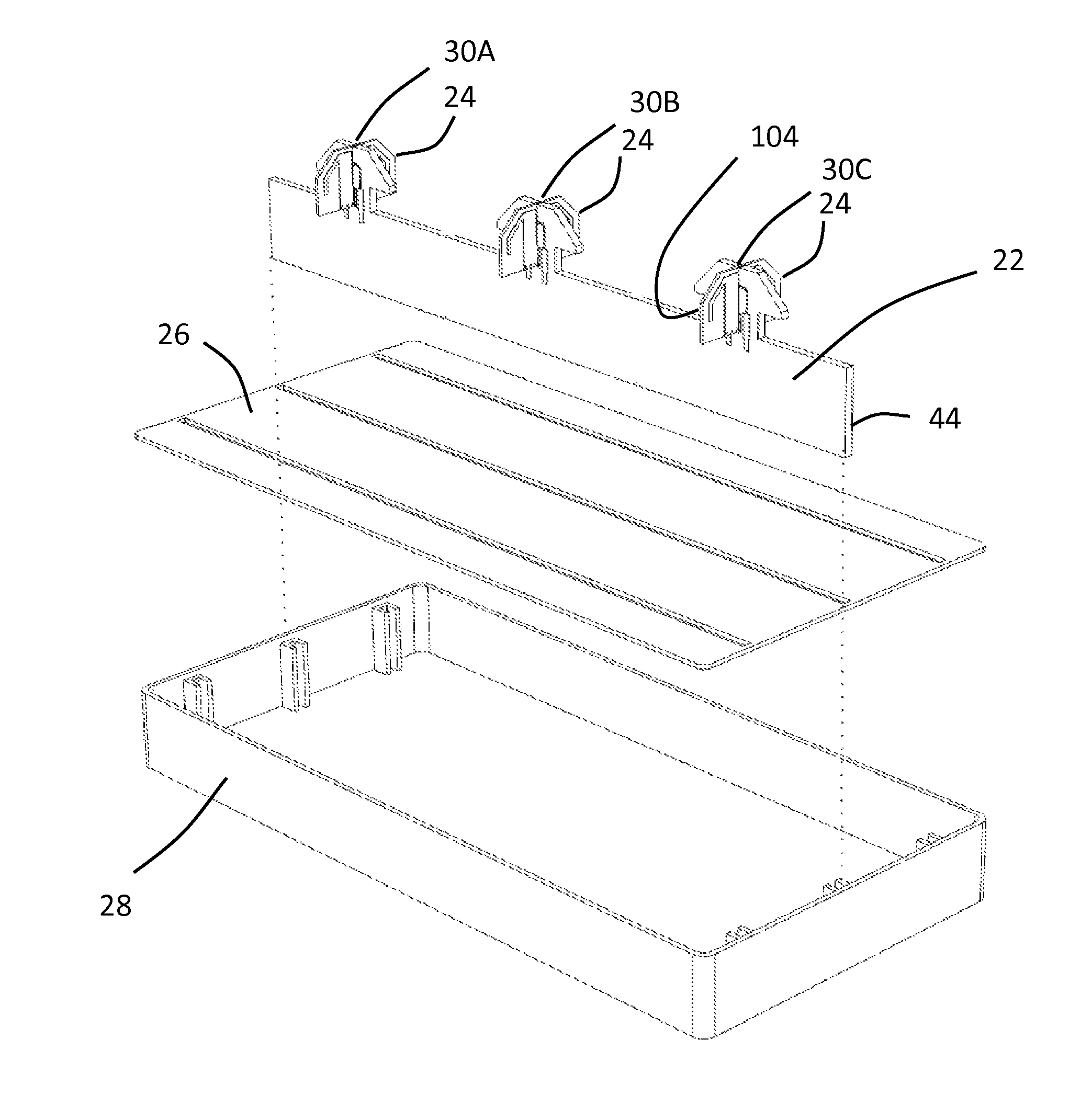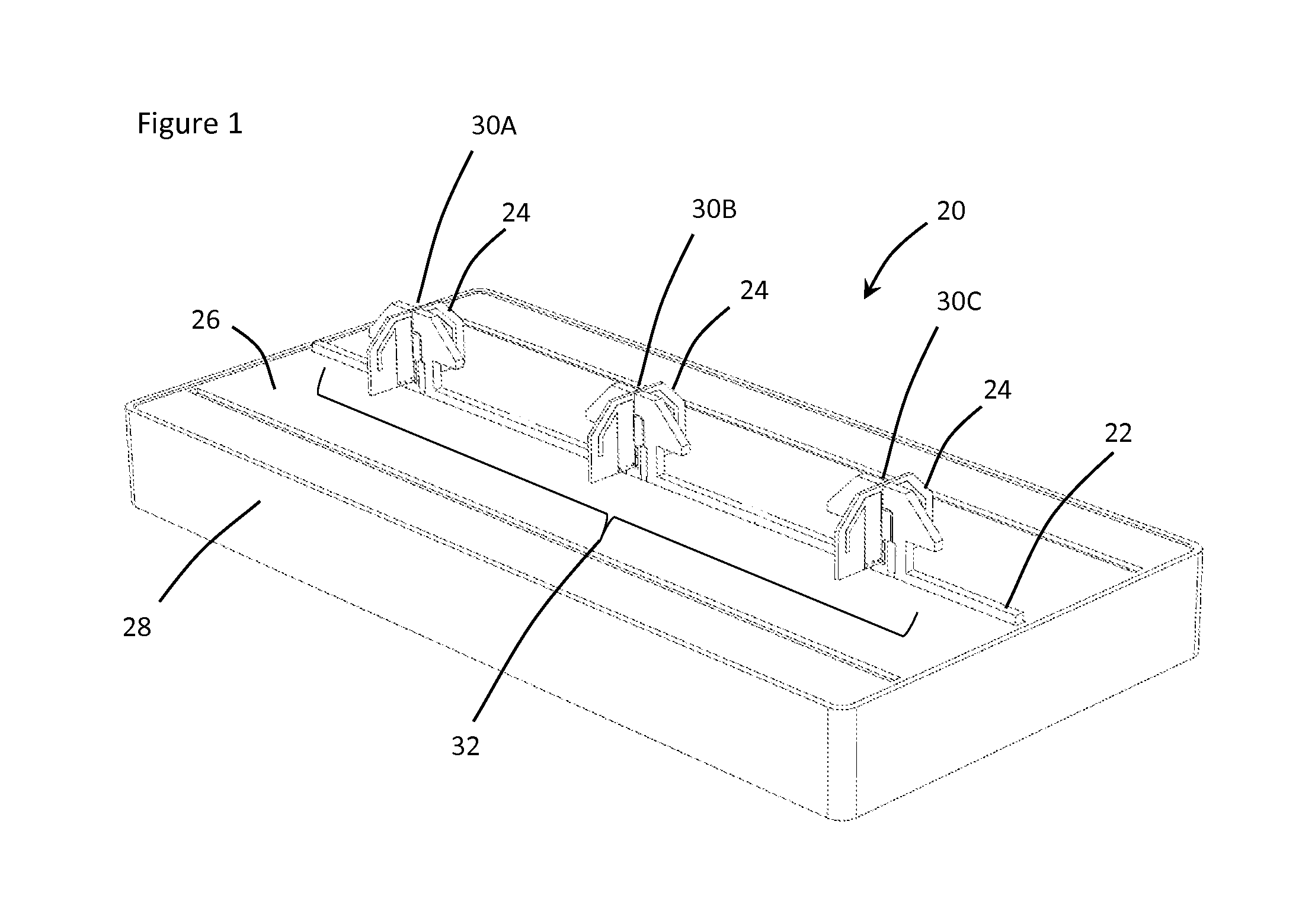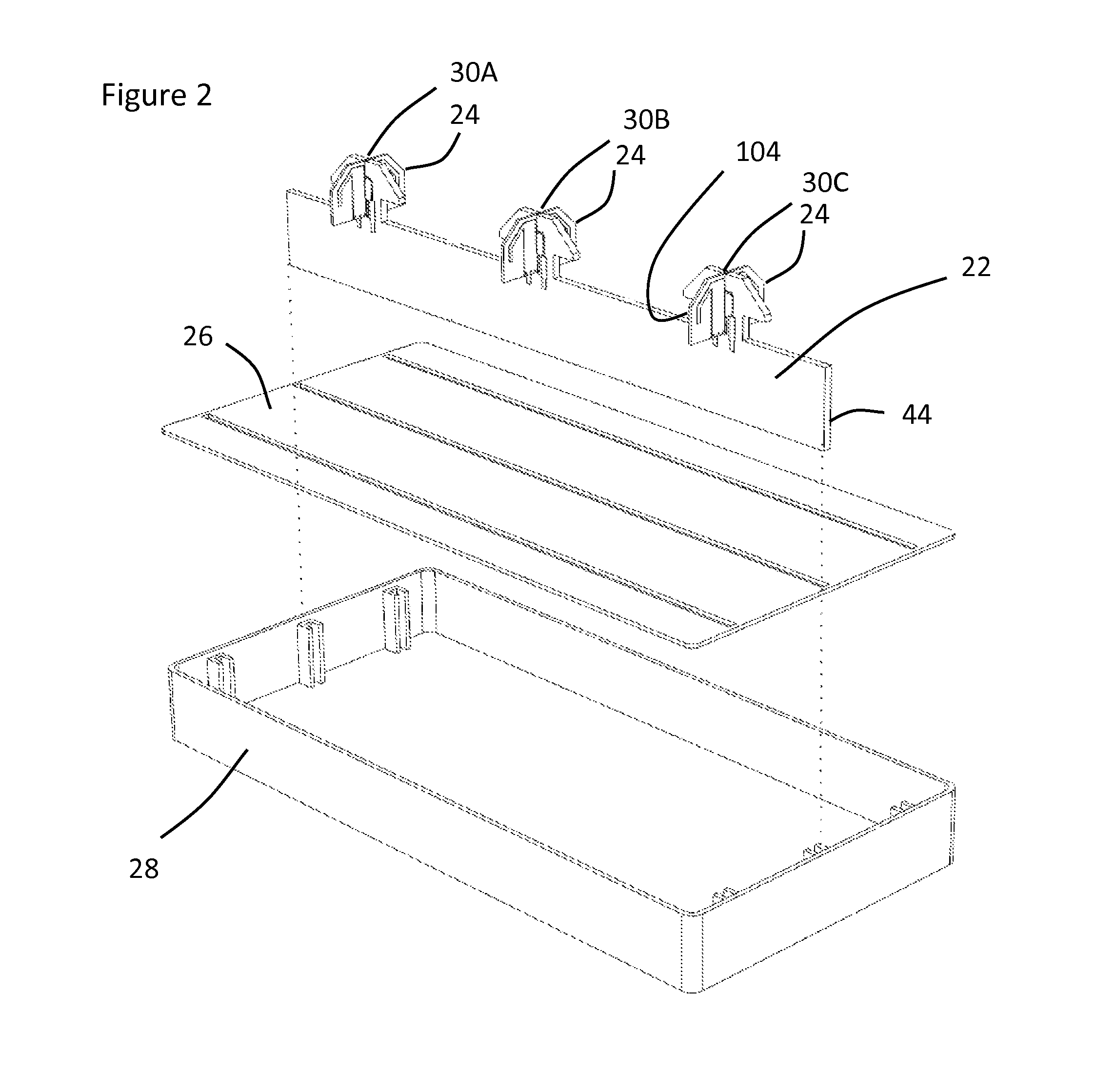Crossed-dipole antenna array structure
a technology of antenna array and dipole antenna, which is applied in the direction of antennas, antenna feed intermediates, antenna details, etc., can solve the problems of increasing the problem of diagonally between the two cards, establishing a crossing dipole substantially perpendicular to the dipole card using a conventional “cross brace” with attached ends, and promoting perpendicularity, so as to reduce the spacing between the crossed dipoles and related structures , the effect of promoting perpendicular
- Summary
- Abstract
- Description
- Claims
- Application Information
AI Technical Summary
Benefits of technology
Problems solved by technology
Method used
Image
Examples
Embodiment Construction
[0031]With reference to FIGS. 1 and 2, an embodiment of a crossed-dipole antenna array structure 20 (hereinafter structure 20) is described. Generally, the structure 20 is comprised of a dipole card 22, a plurality of crossing dipole cards 24, a reflector 26, and a frame 28.
[0032]The dipole card 22 supports a plurality of dipole antennas. Each of the crossing dipole cards 24 supports a substantial portion of a crossing dipole antenna. Additionally, each of the crossing dipole antenna cards 24 is disposed substantially perpendicular to the dipole card 22 and, when operatively associated with the dipole card 22, establishes one of a plurality of crossed-dipole antennas 30A-30C formed from one of the dipole antennas on the dipole card 22 and the substantial portion of the crossing dipole antenna associated with the crossing dipole card 24. The operative association of all of the crossing dipole cards 24 with the dipole card 22 produces an array of crossed-dipole antennas 32. The reflec...
PUM
 Login to View More
Login to View More Abstract
Description
Claims
Application Information
 Login to View More
Login to View More - R&D
- Intellectual Property
- Life Sciences
- Materials
- Tech Scout
- Unparalleled Data Quality
- Higher Quality Content
- 60% Fewer Hallucinations
Browse by: Latest US Patents, China's latest patents, Technical Efficacy Thesaurus, Application Domain, Technology Topic, Popular Technical Reports.
© 2025 PatSnap. All rights reserved.Legal|Privacy policy|Modern Slavery Act Transparency Statement|Sitemap|About US| Contact US: help@patsnap.com



